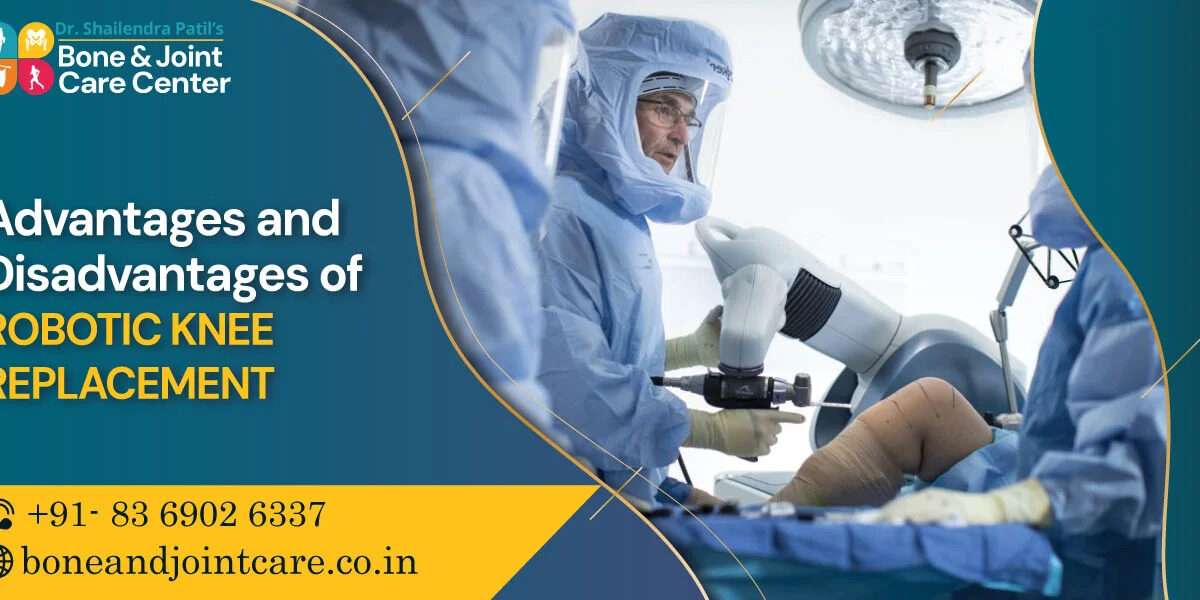Robotic knee replacement is a relatively new technology that some surgeons practise in the surgical field, in the execution of knee replacement surgeries. The above benefits demonstrate that it holds great potential as a tool during surgeries since it adds accuracy to the process. Although it is quite effective, its effectiveness is not absolute and it has some drawbacks. More specifically, in more detail, regarding this subject, in this post, we will discuss the advantages and disadvantages of robotic knee replacement.
Advantages of Robotic Knee Replacement
Increased accuracy and precision in surgeries:
The robotic systems complement the operation ability of the surgeon by providing them advanced technology they use when fitting artificial knees. It refers to a surgical tool that is able to accurately and carefully dissect and suture the bones as per a surgical plan prepared in advance.
For this purpose, such precision aids in confirmation of positions of components that need to be placed for maximum functionality and durability of the new knee joint added to the human body.
Improved implant alignment and positioning:
Robotic systems allow surgeons to pre-plan the surgery on 3D scans of patients’ knees. During surgery, the robot helps ensure the cuts and positioning of knee implants match this pre-surgical plan. This level of accuracy in alignment is not possible through manual techniques alone. Proper alignment is important as it reduces the risks of complications and need for revision surgeries.
Minimised blood loss and trauma:
The precision afforded by robotics enables the surgeon to minimise unnecessary cuts and reduce variability between surgeries. Smaller and more precise cuts mean less tissue damage and blood loss compared to manual techniques. This leads to less pain and faster recovery times for patients who undergo robotic knee replacement at clinics like Robotic Knee Replacement Surgeon in Mulund, Mumbai.
Disadvantages of Robotic Knee Replacement
Higher cost and limited access to the technology:
The high-tech robotic systems are very expensive to purchase and maintain. Robotic instruments and single-use items also increase surgical costs. Due to the significant costs involved, robotic knee replacement is only available at a few large specialty hospitals like Robotic Knee Replacement Surgery in Mulund, Mumbai. This limits patient access to the technology.
Potential technical issues and reliance on technology:
Being a new technology, robotic systems can potentially malfunction or face technical snags during surgery. They also require uninterrupted power supply and have zero tolerance for any technical errors. Surgeons must remain ready to take over manually if needed. This reliance on technology during surgery is a concern.
Limited evidence to support long-term outcomes:
While initial research shows benefits in short-term outcomes like alignment and function, there is limited data on long-term durability and outcomes of robotic knee replacements as compared to traditional methods. More long-term studies are still needed to establish proven benefits over 10-15 years.
Conclusions
Robotic knee replacement is an evolving technology that offers potential precision, function and recovery advantages. However, its high costs, reliance on technology, and lack of long-term evidence are some limitations. As the technology matures, the benefits may outweigh disadvantages for more patients.
But for now, it remains an option primarily for select cases at large specialty hospitals like Robotic Knee Replacement Surgeon in Mulund, Mumbai which offer this advanced technology. More research is still needed to establish clear long-term patient benefits of robotic knee replacement.







